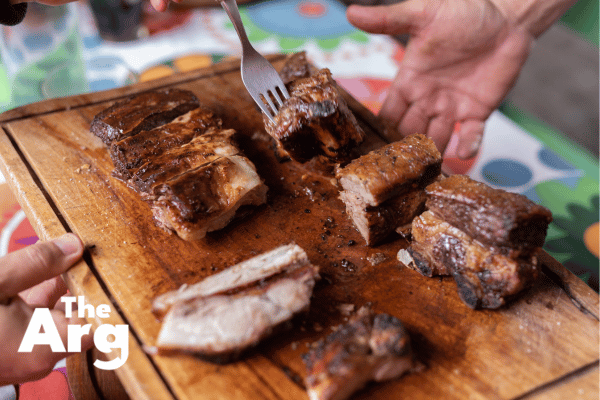The Argentine asado is a culinary experience that transcends the simple act of cooking meat. It represents a moment of gathering, enjoyment, and sharing among friends and family. This authentic ritual, perfected over the years, demands attention and care at every step. In this guide, we'll show you how to make an asado to fully enjoy it.
Key Differences Between an Argentine Asado and a Barbecue
Although asado and barbecue share the principle of cooking meat over fire, there are significant differences that define the Argentine experience:
- The Meat: In Argentina, specific and thick cuts of beef, chicken, and even lamb are preferred, cooked whole to preserve their juiciness.
- The Grill: It should be adjustable in height and, unlike many barbecues, it is not recommended to have a lid.
- The Fire and Embers: A slow cook with abundant embers is sought, keeping the grill at a distance of 25-30 centimeters to cook the meat evenly and consistently.
- The Cooking: The asado is characterized by long cooking periods, adjusting the location of the cuts according to their thickness to prevent burning.
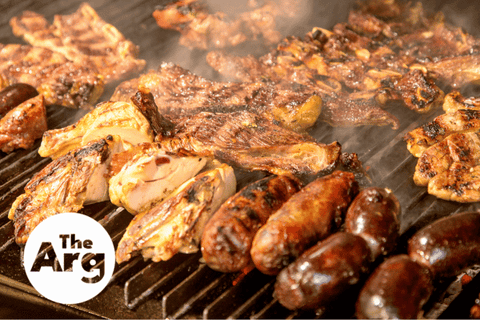
The Cuts of Meat and Their Preparation
The ideal cuts for an Argentine asado include the heart of rump, narrow steak, and skirt steak, noted for their flavor and texture. The rib strip, flank, and, if possible, offal should not be missed. The seasoning focuses on simplicity, mainly recommending coarse salt, though the use of aromatic herbs or light marinades is not ruled out. The meat is enjoyed in its purest state, occasionally accompanied by chimichurri sauce.
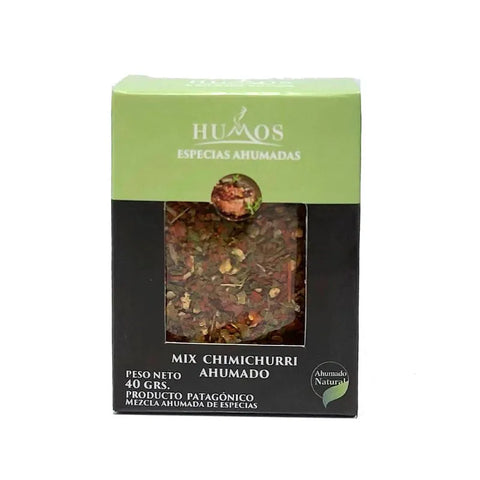
Fire Preparation and Cooking Time
The choice between wood and charcoal directly influences the flavor of the asado. Wood, preferably dry, provides a distinctive smoky flavor, while charcoal allows for more precise temperature control. The fire is prepared by strategically placing the fuel under the grill, ensuring a uniform distribution of heat.
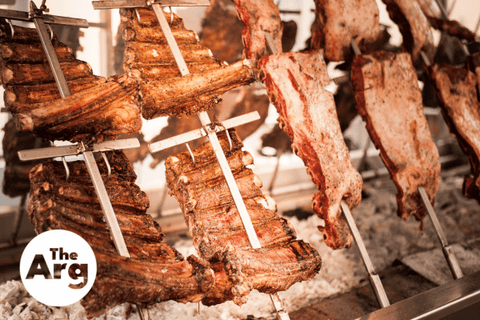
How long does it take to make an asado
- Sausages (chorizos), blood sausages (morcillas), small intestines (chinchulines), and sweetbreads (mollejas): These usually take about 20-30 minutes.
- Ribs and flank cuts (asado de tira, vacío): These can take 1.5 to 3 hours, depending on their thickness and how well-done you like your meat.
- Large cuts or whole animals (lechón, whole lamb): These require several hours, often 4-8 hours, as they are cooked slowly over a lower heat.
General Timeline
- Lighting the fire: 20-30 minutes.
- Letting the grill reach the right temperature: 20-30 minutes after the fire is ready.
- Cooking time: Ranges from 20 minutes for smaller items to several hours for larger cuts or whole animals.
Best Side Dishes to Accompany an Argentine Asado
Beyond the meat, roasted vegetables such as potatoes, onions, peppers, and asparagus become ideal companions. Fresh salads, potato and egg salad with mayonnaise, or a platter of cheeses and cold cuts perfectly complement the asado experience, balancing flavors and textures.
How to Make an Authentic Argentine Asado: Step by Step
Step 1: Environment and Materials Preparation
Before lighting the fire, organize your workspace. Ensure you have all necessary utensils at hand: adjustable-height grill, charcoal or wood (according to preference), lighter, paper to kindle the fire, tongs, spatula, wire brush, cutting board, and sharp knives.
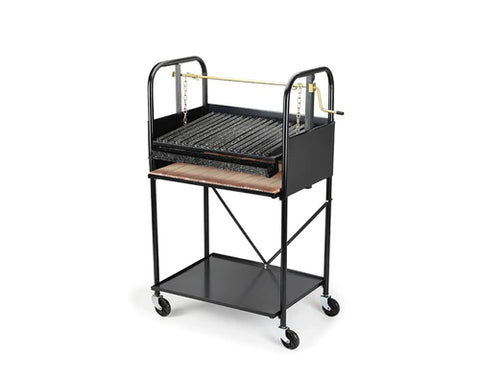
Step 2: Selection and Preparation of the Meat
Select the cuts of meat according to your preference, including options like rib strip, chorizo, blood sausage, strip steak, flank, and matambre. Make sure the meat is at room temperature before cooking. Season with coarse salt or prepare light marinades if you wish, but remember that simplicity is key to highlighting authentic flavors.
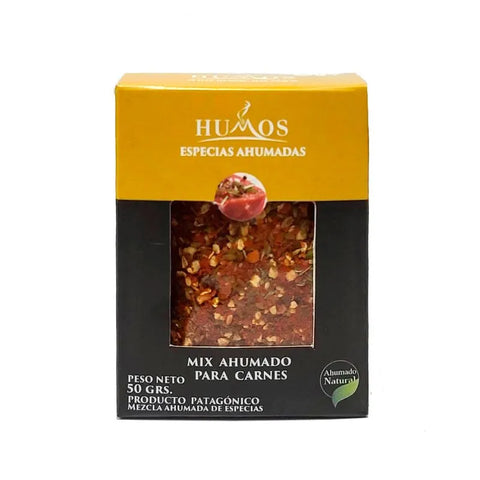
Step 3: Fire Preparation
If you choose wood, opt for woods that provide a smoky flavor, such as quebracho. You can obtain this flavor with smoker chips, like HUMOS.
For charcoal, look for a quality that allows uniform and prolonged combustion. Build a mound with the chosen fuel and light it. Wait until the flames have died down and you have red, glowing embers.

Step 4: Cleaning and Heating the Grill
While the embers are getting ready, clean the grill with a wire brush. Place the embers evenly under the grill to heat it, which will help remove any remaining residue. The right temperature is when you can hold your hand over the grill at a distance of about 25-30 centimeters for 5-6 seconds without feeling excessive heat.
Step 5: Cooking the Meat
-
Start: Begin with the chorizos and blood sausages at the part furthest from direct heat so they cook slowly.
-
Thick Cuts: Place the thicker cuts like the rib strip and flank in the center of the grill, where the heat is more intense. Use the method of indirect heat for even cooking, moving the embers as necessary.
-
Rotation and Time: Flip the meat occasionally to ensure even cooking. The time varies according to the cut and the desired degree of cooking, but as a general rule, wait at least 20-30 minutes per side for the thicker cuts.
Step 6: Resting and Serving
Once the meat is cooked to your liking, let it rest for a few minutes before cutting. This allows the juices to redistribute, ensuring that every bite is juicy and full of flavor. Serve the meat on a tray or cutting board, accompanied by your favorite side dishes and, of course, a good Argentine wine to complement.

Step 7: Side Dishes and Finishing
While the meat rests, take the opportunity to grill some vegetables or prepare fresh salads as accompaniments. Potatoes, onions, and peppers are excellent options to roast alongside the meat in the final minutes of cooking.
Following these steps, you're not just preparing an Argentine asado, but also participating in a rich and deeply rooted cultural tradition. Enjoy the process, the company, and of course, the delicious result of your work.

